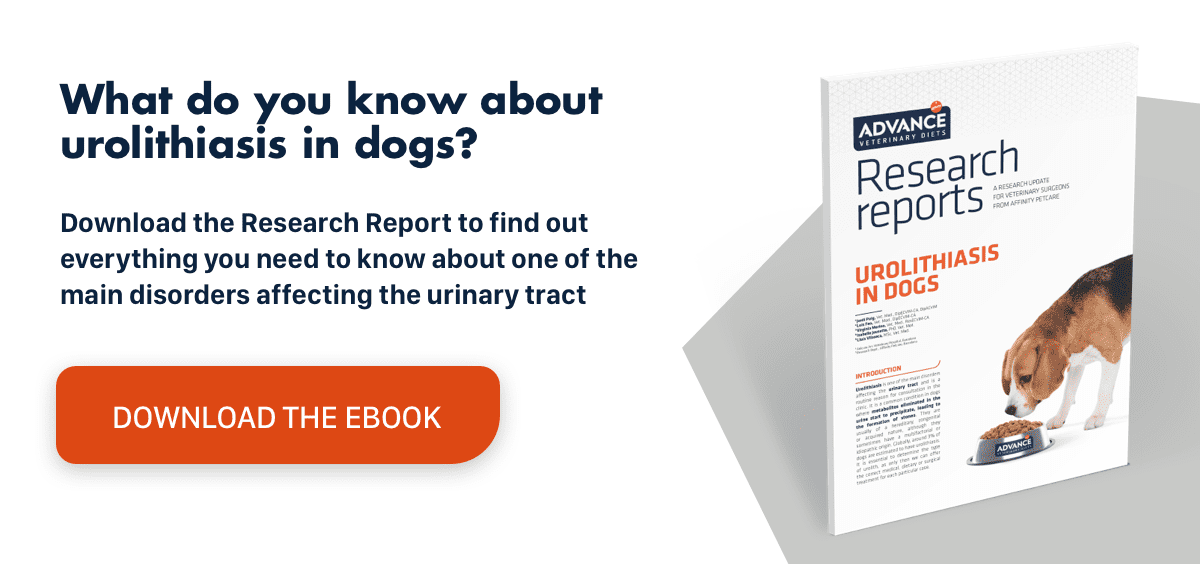Urinary incontinence in dogs following ectopic ureter surgery
Urinary incontinence in dogs is a relatively common problem, with obesity and castration among the predisposing factors. In some cases, the incontinence is due to problems such as vesical neoplasms, pelvic masses or urethral malformations, such as ectopic ureter. In fact, ectopic ureter is usually detected because of urine leakage, which is the most common reason for consultation.
What is ectopic ureter?
Ectopic ureter is a congenital disorder, i.e., a defect in the urogenital system that occurs during embryonic development, in which one or both ureters enter the bladder at a site other than the vesical trigone.
According to an article in the journal Clínica Veterinaria de Pequeños Animales (Small Animal Veterinary Medicine)1, 70% of ectopic ureters end in the vagina, 12% in the urethra, 8% in the bladder and 3% in the uterus. These values show why ectopic ureter is much more common among females – at a ratio of 25:1 – although it probably goes unnoticed in males because of their longer urethra.
Ectopic ureter is more common in some breeds, such as the Siberian Husky, Bulldog, Golden Retriever and Labrador Retriever, which are believed to have a predisposition because of certain hereditary characteristics. In dogs, unilateral ectopic ureters are more common than bilateral ones, while intramural ureters are more typical than extramural ureters. Besides urinary incontinence, ectopic ureter usually presents with upper and/or lower urinary tract infections and kidney atrophy due to chronic pyelonephritis.
Ectopic ureter: treatment
Treatment for ectopic ureter centres on surgical correction. Surgery is required to create a new urethral opening in the bladder and then attach the distal ureter. For unilateral ectopic ureter, a nephroureterectomy is recommended in the event of patent functional loss, provided the contralateral kidney and ureter are normal.
Although the main aim of surgery is to achieve complete continence, it should be noted that some dogs may continue to have a certain degree of urinary incontinence. Following corrective surgery, urinary incontinence is fully resolved in around 72% of patients, while the rate of complications is 26% according to a study conducted at the University of Zurich.2
Postoperative urinary incontinence
A study at the Virginia–Maryland College of Veterinary Medicine3 analysed 33 females who underwent surgical correction of ectopic ureter to determine which factors are predictive of postoperative urinary incontinence and continence.
It was noted that the extramural or intramural path of ectopic ureters, their position on the left or right side, and their unilateral or bilateral character had no influence on the rate of postoperative incontinence. Nor did the presence of hydroureter or a urinary tract infection correlate with postoperative incontinence. What is more, cases of postoperative urinary incontinence did not resolve.
Nevertheless, another study conducted in 21 dogs at the University of Utrecht4 revealed that cases of hydroureter and/or hydronephrosis had a significantly lower risk of postoperative urinary incontinence. The authors also reported that age at surgery, body weight, presence of a urinary tract infection and the type of surgical technique used had no bearing on attempts to predict the likelihood of postoperative incontinence.
A more recent study conducted at the University of Istanbul4 that compared different surgical techniques for the treatment of ectopic ureter concluded that new neoureterostomy techniques for intramural ectopic ureters are no more effective than older techniques.
